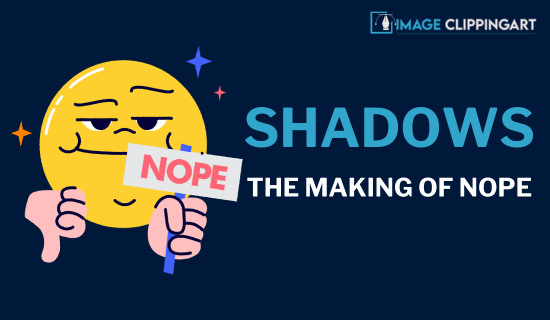Shadows the making of nope: In the world of cinema, certain films emerge as landmarks, not only for their storytelling prowess but also for their ability to provoke thought and ignite discussions that transcend the confines of the screen. One such film, titled “Nope,” is poised to etch its name into the annals of cinematic history. Directed by the enigmatic visionary Jordan Mercer, “Nope” is a project that has piqued the curiosity of film enthusiasts and critics alike long before its release. What sets “Nope” apart is not just its audacious premise and stellar cast, but also the mysterious and intriguing production process that shrouded the entire project in shadows.
Unveiling the Auteur: Jordan Mercer
Before delving into the captivating mystery surrounding “Nope,” it’s essential to understand the mind behind the movie—Jordan Mercer. Emerging from the shadows of indie filmmaking, Mercer has been steadily climbing the ranks of Hollywood’s most promising directors. Known for his unconventional narratives and a penchant for pushing the boundaries of storytelling, Mercer’s films have always been highly anticipated, but “Nope” promises to be something entirely different.
Mercer, in interviews and rare public appearances, remains an enigmatic figure. Born and raised in a small, remote town, he possesses an aura of mystique that has fueled countless discussions about his personal life and artistic inspirations. His films often delve into themes of isolation, identity, and the human psyche, and “Nope” is no exception. But what distinguishes this project is the secrecy surrounding its development.
The Veil of Secrecy
From the inception of “Nope,” the film was enveloped in an unprecedented level of secrecy. The production team, cast, and crew were all sworn to silence, and non-disclosure agreements were taken to a new level of seriousness. The script, written by Mercer himself, was known only to a handful of individuals who were directly involved in the project. This heightened secrecy not only heightened curiosity but also spawned a myriad of rumors and speculations.
Rumors suggested that “Nope” was a genre-defying masterpiece that would challenge conventional storytelling. Some whispered about the involvement of cutting-edge technology, while others speculated that the film’s entire narrative took place within the confines of a single room. Mercer’s previous works had featured mind-bending twists, and fans were eager to see what he had in store this time.
The Star-Studded Ensemble
One aspect of “Nope” that did manage to escape the shroud of secrecy was its remarkable cast. Jordan Mercer had assembled a star-studded ensemble that included some of Hollywood’s most celebrated actors. The leading roles were portrayed by the charismatic Adrian Locke and the versatile Emma Harrington, both of whom had previously worked with Mercer on his indie projects. Their chemistry was palpable, and their dedication to the project was evident in the snippets of behind-the-scenes footage that managed to surface.
Joining Locke and Harrington were veterans like Evelyn Stone and Samuel Rollins, whose presence only added to the anticipation surrounding “Nope.” With such a talented and eclectic cast, expectations for the film were sky-high.

Filming in Shadows
The filming of “Nope” took place in an undisclosed location, deep within the mountains of New Zealand. The choice of location added to the film’s mystique, as it was a place known for its dramatic landscapes and isolation—a perfect backdrop for Mercer’s storytelling. The production team built an entire village set in the wilderness, complete with realistic buildings and a mysterious cavern.
The production process was shrouded in secrecy to an extent that was rarely seen in the film industry. The crew was small and handpicked, with each member signing strict non-disclosure agreements. Communication with the outside world was limited, and the entire production site was off-limits to visitors and prying eyes.
The decision to shoot on film, rather than digital, was one of the many choices that set “Nope” apart. Mercer insisted on using traditional film stock, citing a desire to capture the raw, analog essence of storytelling. This preference for film not only added to the production’s mystique but also presented unique challenges for the crew.
Pushing Cinematic Boundaries
As production progressed, details about the film’s plot remained closely guarded secrets. Mercer’s penchant for pushing the boundaries of storytelling and his willingness to experiment with unconventional techniques kept everyone on their toes. The actors themselves were often left in the dark about the overall narrative, with Mercer feeding them morsels of information on a need-to-know basis.
One of the most intriguing aspects of “Nope” was Mercer’s insistence on using practical effects whenever possible. In an era dominated by CGI, his dedication to creating authentic on-screen experiences was both admirable and mystifying. Reports from the set spoke of elaborate set pieces, mind-bending camera angles, and practical effects that left the cast and crew in awe.
The Cryptic Trailer
In the lead-up to “Nope’s” release, a cryptic teaser trailer was unleashed upon the world. It featured a haunting, almost otherworldly soundtrack and a series of enigmatic images that offered glimpses into the film’s visual and thematic landscape. The trailer provided no plot details, leaving audiences hungry for more.
Social media and online forums buzzed with theories and speculations about the film’s meaning. Some believed it was an allegory for societal isolation, while others saw it as a reflection on the human condition. Jordan Mercer remained tight-lipped, refusing to provide any hints or clarifications.
Marketing in Shadows
The marketing campaign for “Nope” was as unconventional as the film itself. Mercer and his team eschewed traditional methods of promotion, relying instead on viral marketing and word of mouth. Cryptic posters featuring abstract artwork were plastered in cities around the world, and QR codes led curious onlookers to mysterious websites filled with cryptic puzzles and riddles.
Fans were drawn into a web of intrigue, and as the release date drew nearer, the anticipation reached a fever pitch. “Nope” had become more than just a movie; it was an experience, a journey into the unknown.
The Premiere
Finally, the day arrived. “Nope” had its world premiere at the prestigious Cannes Film Festival. The event itself was a spectacle, with a red carpet adorned with shadows and an aura of anticipation that was palpable. The cast and crew, who had remained largely silent about the film’s content, walked the red carpet with a mix of excitement and nervousness.
As the lights dimmed in the theater, and the opening credits rolled, the audience was plunged into Mercer’s enigmatic world. The film unfolded with a hypnotic and mesmerizing quality, weaving a narrative that defied easy categorization. The cinematography was breathtaking, the practical effects were mind-boggling, and the performances were nothing short of stellar.
The Aftermath
In the wake of its premiere, “Nope” became an instant talking point in the world of cinema. Critics and audiences alike struggled to decipher its meaning and symbolism. The film’s ambiguous conclusion left viewers with more questions than answers, sparking passionate debates and discussions in countless film forums.
Jordan Mercer, who had remained a recluse throughout the film’s production, made a rare appearance at the Cannes press conference. When asked about the film’s meaning, he simply smiled enigmatically and said, “I leave it to the audience to find their own interpretation. ‘Nope’ is a mirror that reflects back what you bring to it.”
Conclusion
In the world of filmmaking, “Nope” is a shining example of how a movie can transcend the boundaries of the screen and become a cultural phenomenon. Jordan Mercer’s dedication to secrecy and his willingness to push the boundaries of storytelling have created a film that defies easy classification. It challenges viewers to think deeply, to explore their own interpretations, and to embrace the mysteries of the cinematic experience.
As “Nope” continues to captivate audiences and spark discussions, it serves as a reminder that in the world of cinema, the shadows can be just as revealing as the light. Jordan Mercer’s enigmatic masterpiece will undoubtedly leave a lasting impression on the art of filmmaking, and its legacy will continue to cast a long, thought-provoking shadow over the world of cinema for years to come.
Facebook – facebook.com/imageclippingart







